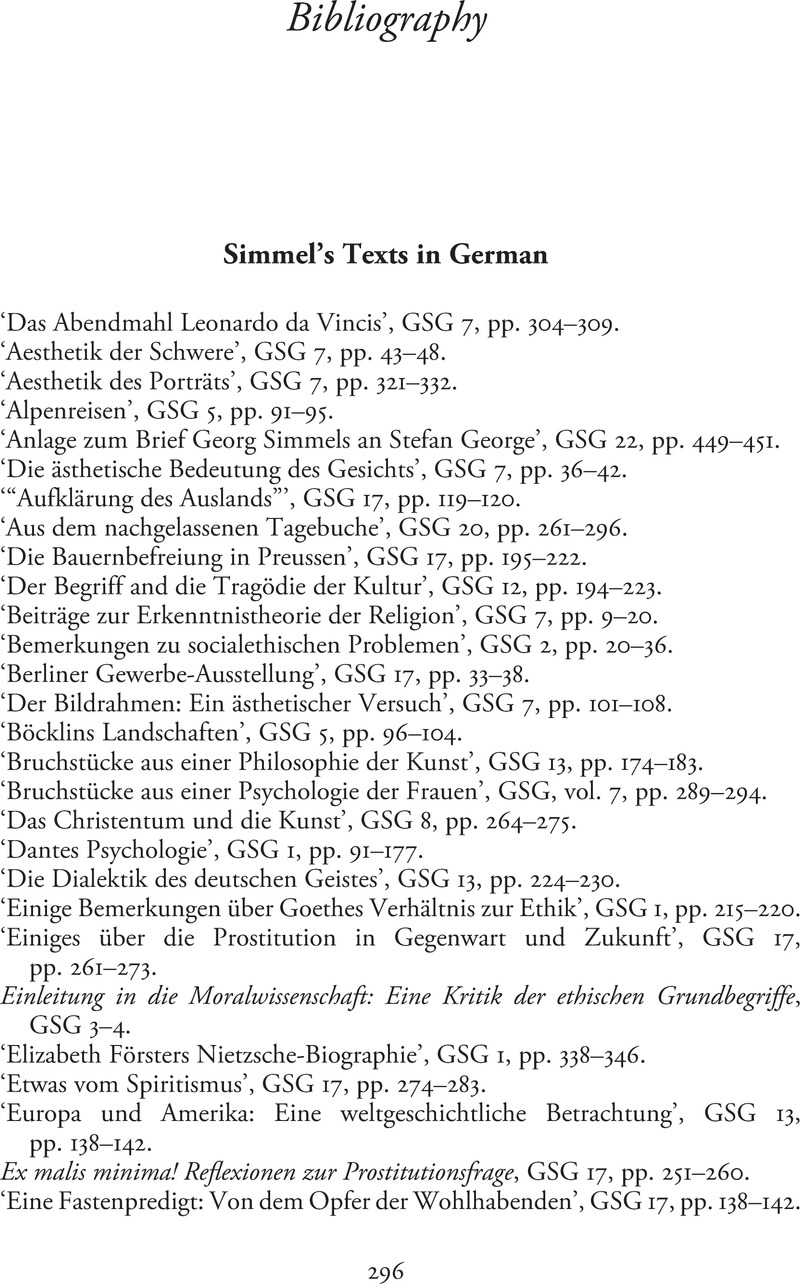Book contents
- Georg Simmel and German Culture
- Ideas in Context
- Georg Simmel and German Culture
- Copyright page
- Contents
- Acknowledgements
- Note on Translations and References
- Introduction
- Chapter 1 Bildung, Kultur, Crisis
- Chapter 2 Unity in Variety
- Chapter 3 Unity versus Variety
- Chapter 4 Unity above Variety
- Conclusion
- Bibliography
- Index
- References
Bibliography
Published online by Cambridge University Press: 07 July 2021
- Georg Simmel and German Culture
- Ideas in Context
- Georg Simmel and German Culture
- Copyright page
- Contents
- Acknowledgements
- Note on Translations and References
- Introduction
- Chapter 1 Bildung, Kultur, Crisis
- Chapter 2 Unity in Variety
- Chapter 3 Unity versus Variety
- Chapter 4 Unity above Variety
- Conclusion
- Bibliography
- Index
- References
Summary

- Type
- Chapter
- Information
- Georg Simmel and German CultureUnity, Variety and Modern Discontents, pp. 296 - 328Publisher: Cambridge University PressPrint publication year: 2021

